There’s no time like the present to find your creative voice with LEGO. Today’s guest is another builder who only recently began sharing their works online and already they are making quite a splash with fellow AFOLs. Luke, aka cathedralofbricks, creates castles and vignettes that blend gothic architecture and fantasy through a romantic lens.
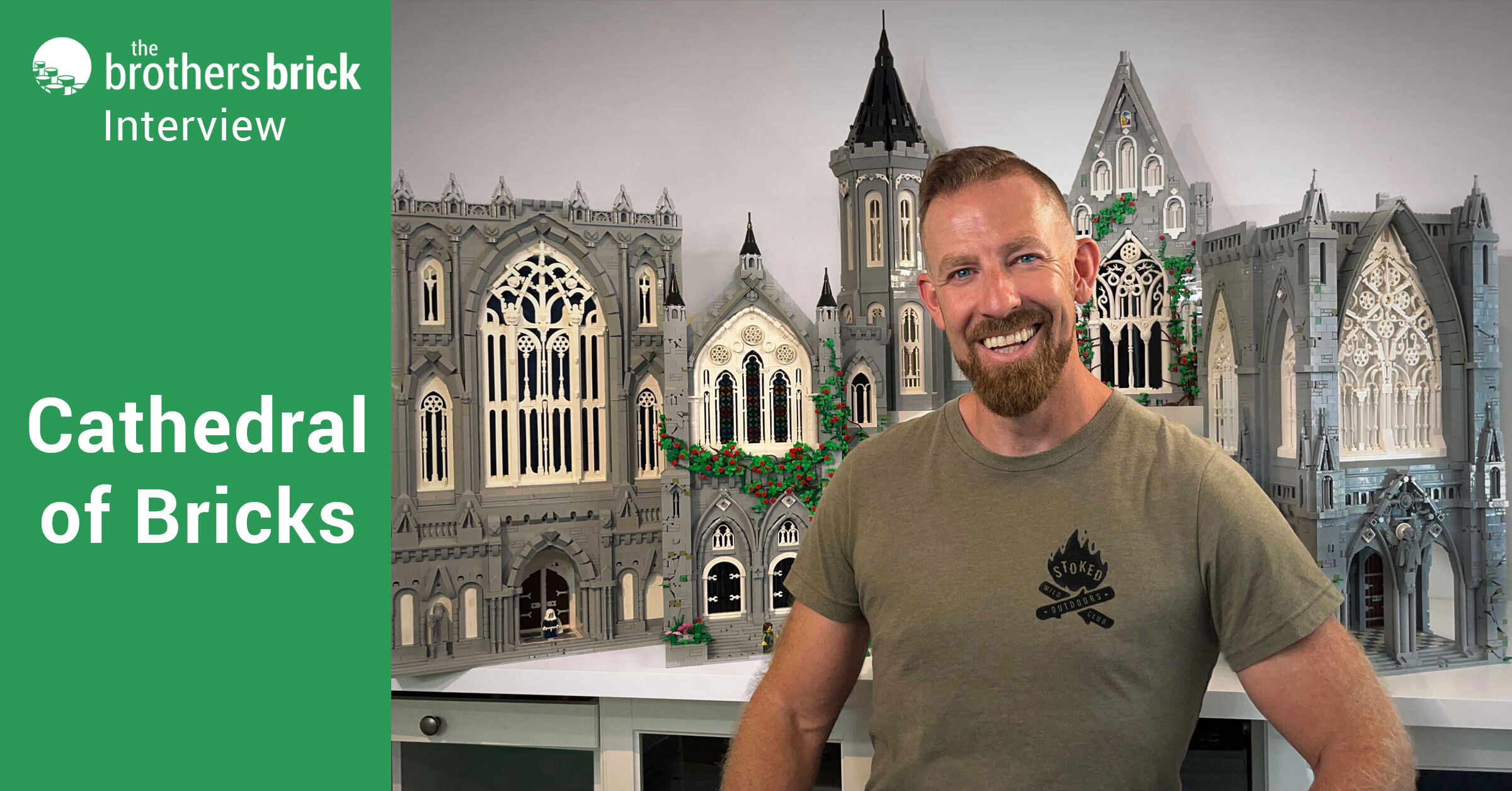
Over just a few months, Luke has created an impressive body of MOCs. We’re excited to sit down with Luke to learn more about how he found his creative voice in LEGO as someone coming to the hobby later in life.
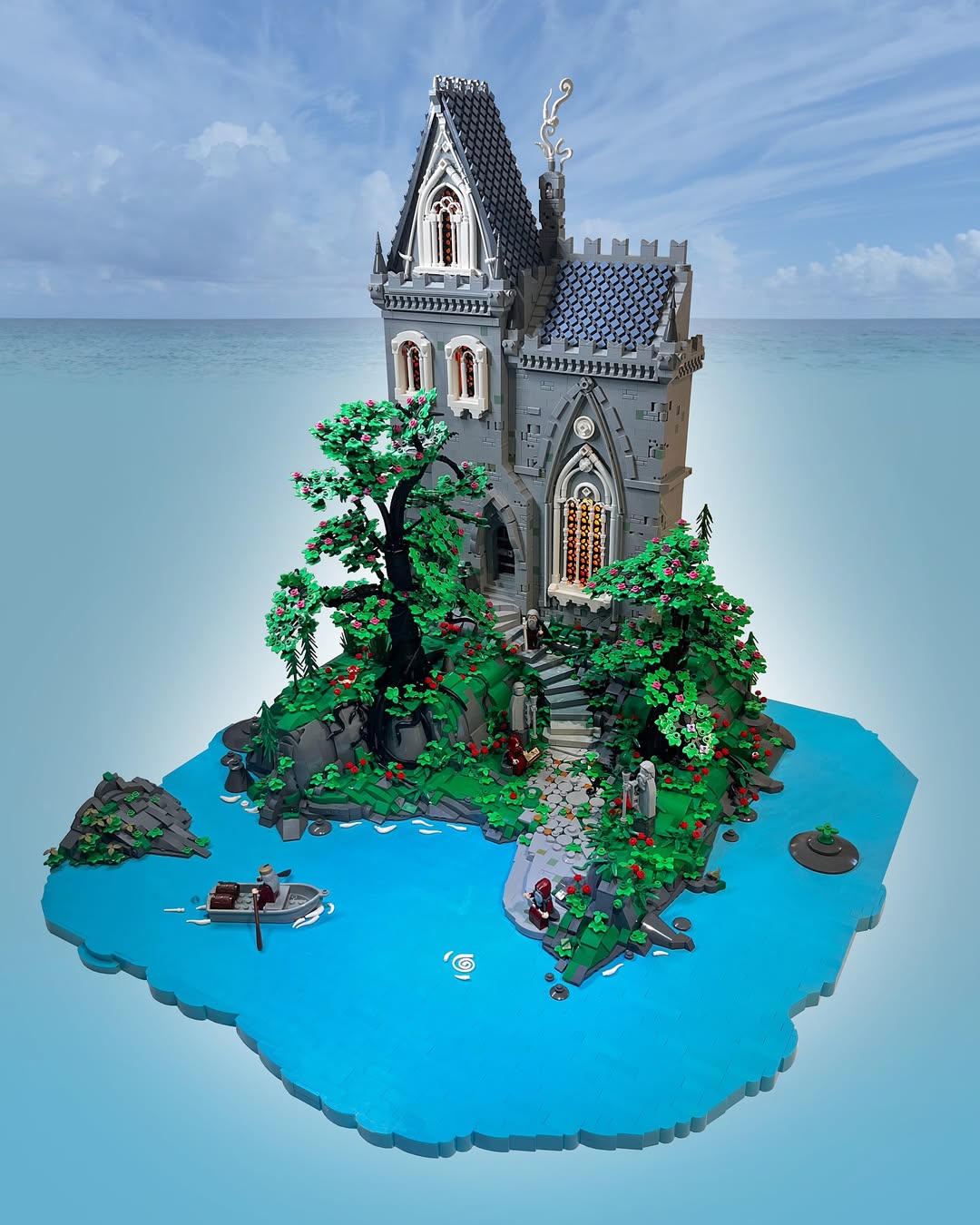
TBB: We’re in for a treat with today’s guest. Can you introduce yourself to our readers?
Luke: Hi, I’m Luke, the builder behind @cathedralofbricks on Instagram.
TBB: Luke, you’ve only been posting your work for a few months, but from the start, your builds demonstrate an incredible degree of polish and skill, and quite an impressive collection of parts (and I notice a lot of old grey bricks in the mix). Could you share a bit about your LEGO journey up to the debut of Cathedral of Bricks?
Luke: I’ve always found LEGO enjoyable. As a kid in the late 80’s and early 90’s, my siblings and I received a few small sets ( mostly castle and pirate related ) that I loved, but we never had a large collection. I never particularly defined myself as being “into LEGO” at the time. It was just something I played with occasionally. Once I entered my teens and found other interests my sets ended up in storage and I don’t think LEGO really crossed my mind again until years later when becoming an uncle playing with my nephews and having a great time building and imagining with them.
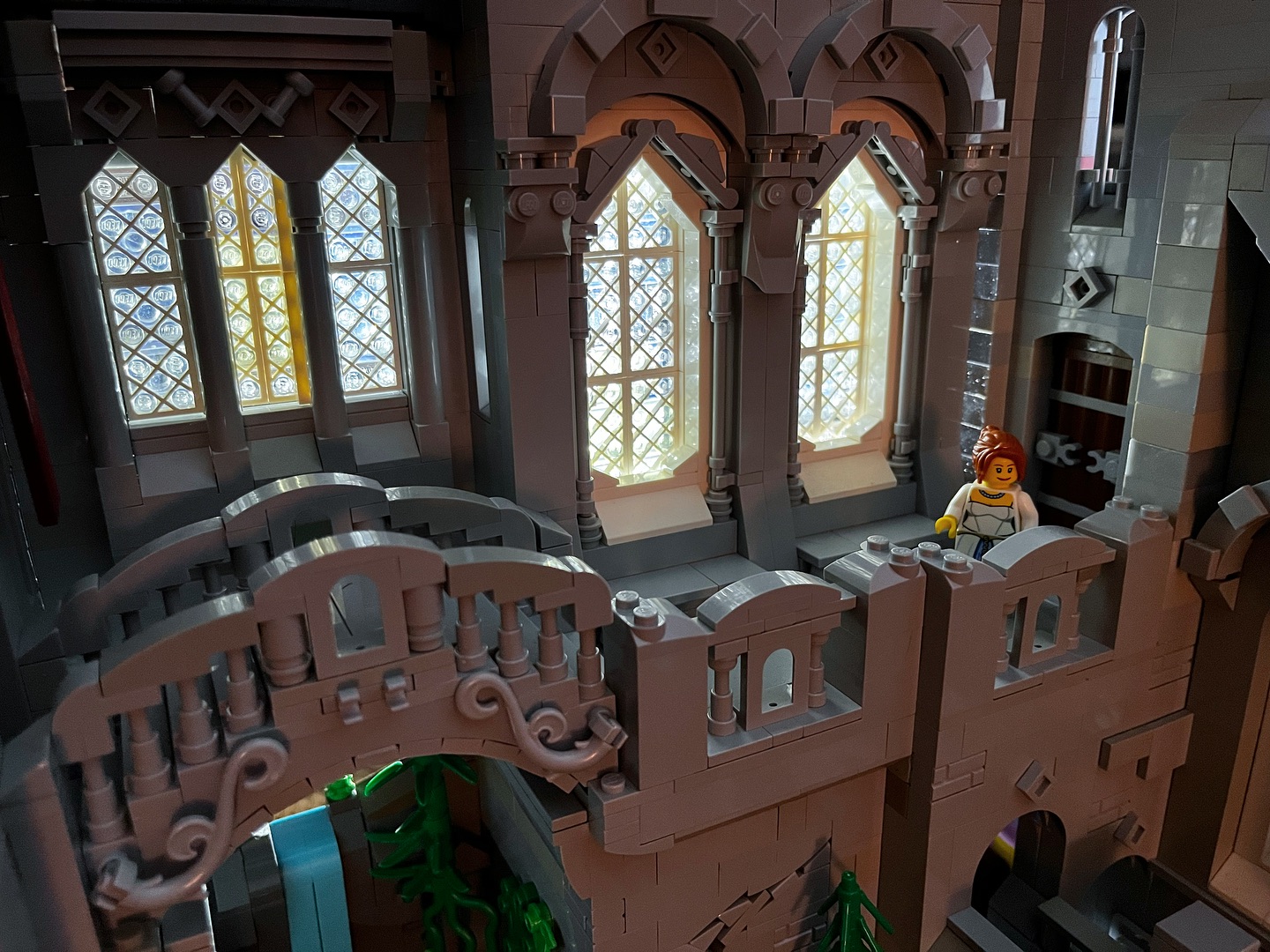
I’ve always been a creative person and ended up going to art school and pursuing a career as a graphic designer. But even though I’ve worked in many mediums, I had filed LEGO in my mind as “For Kids.” It certainly wasn’t something I‘d considered as becoming my own hobby. It was just a great way to connect with the younger generation of my family.
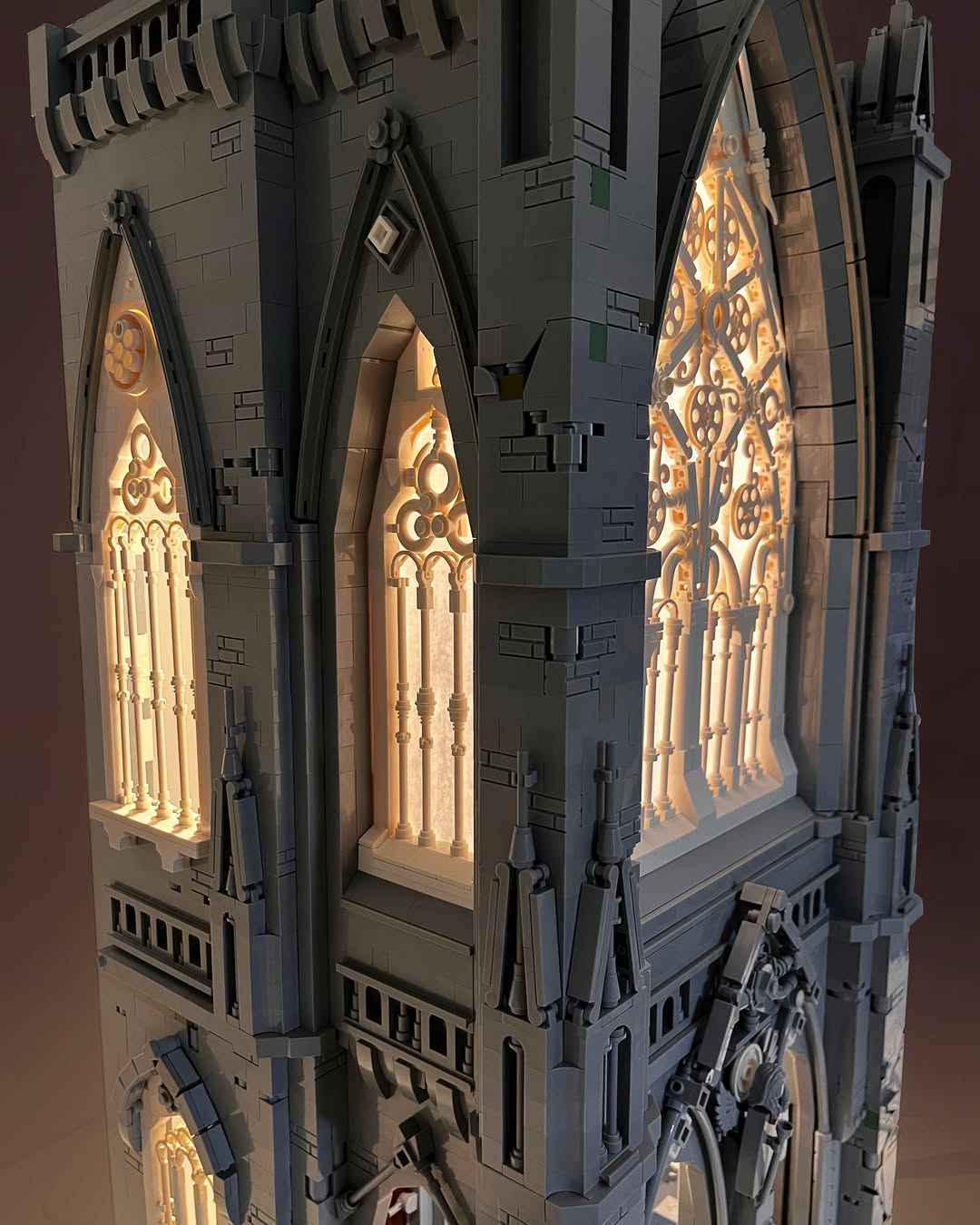
My current LEGO journey really began when I came across the first season of the US LEGO Masters TV series and I was surprised to see a show featuring adult enthusiasts building really awesome creations. It immediately peaked my interest and made me reconsider my view of LEGO, and what it might be like to approach it again in my adulthood as a creative medium rather than just a toy. I wondered if my parents still had my old LEGO collection somewhere in storage. So after a little searching I managed to dig out my old bin and see what remained of my childhood parts. I quickly rediscovered my own inner kid again as I started piecing together those old sets and imagining what more I could do with the pieces than just follow the set instructions.
In my own creative nature, and with the inspiration of what I’d seen other adult creators produce on the show, I quickly realized I’d need more parts if I wanted to try making anything more involved. It was at this point (late 2021) that I truly began collecting Lego again for myself. I began searching out new sets, not so much to build them as to get ahold of a more diverse range of bricks and colors to use for my own creations. In addition to picking up a few new sets, ( mostly Harry Potter themed ) I started searching online for bulk sales of other people’s used collections and began picking up quite a few mixed bags, bins and boxes of pieces to expand my inventory. After a lot of sorting and discovering the real gamut of the parts and colors available to me, I began trying out my own builds. This process was really helpful in reacquainting me with the medium and my imagination started going wild…
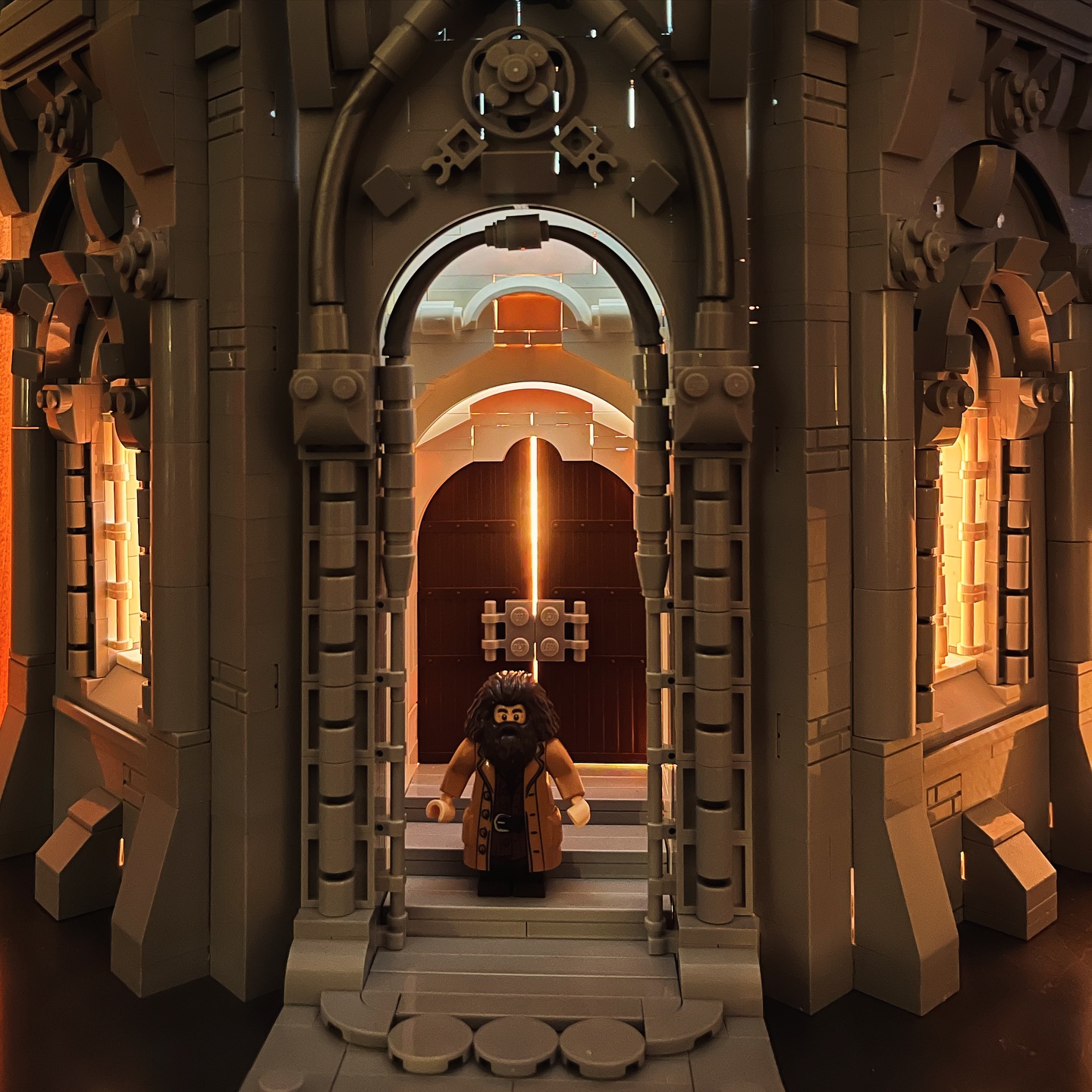
Armed with a greater supply of pieces and drawn back to my early love for medieval castles, and stories like Robin Hood, The Hobbit, Lord Of The Rings, and Narnia, I set out to try building the kind of castles I’d imagined as a kid. I’d build, take apart. Try building again, and kept pushing myself to find ways to add more details as I went, not satisfied with relying on the standard parts usage or the size of the castle sets I’d seen. This turned into a great way to spend my evenings and over the next 3 years I delved into my new found hobby, growing both my ability and my part collection. From the outset, It’s been something done purely for the love of rediscovering play and a new form of creativity. I really had no ambition to show my builds or to pay much attention to what other builders were doing. Just pure casual enjoyment.
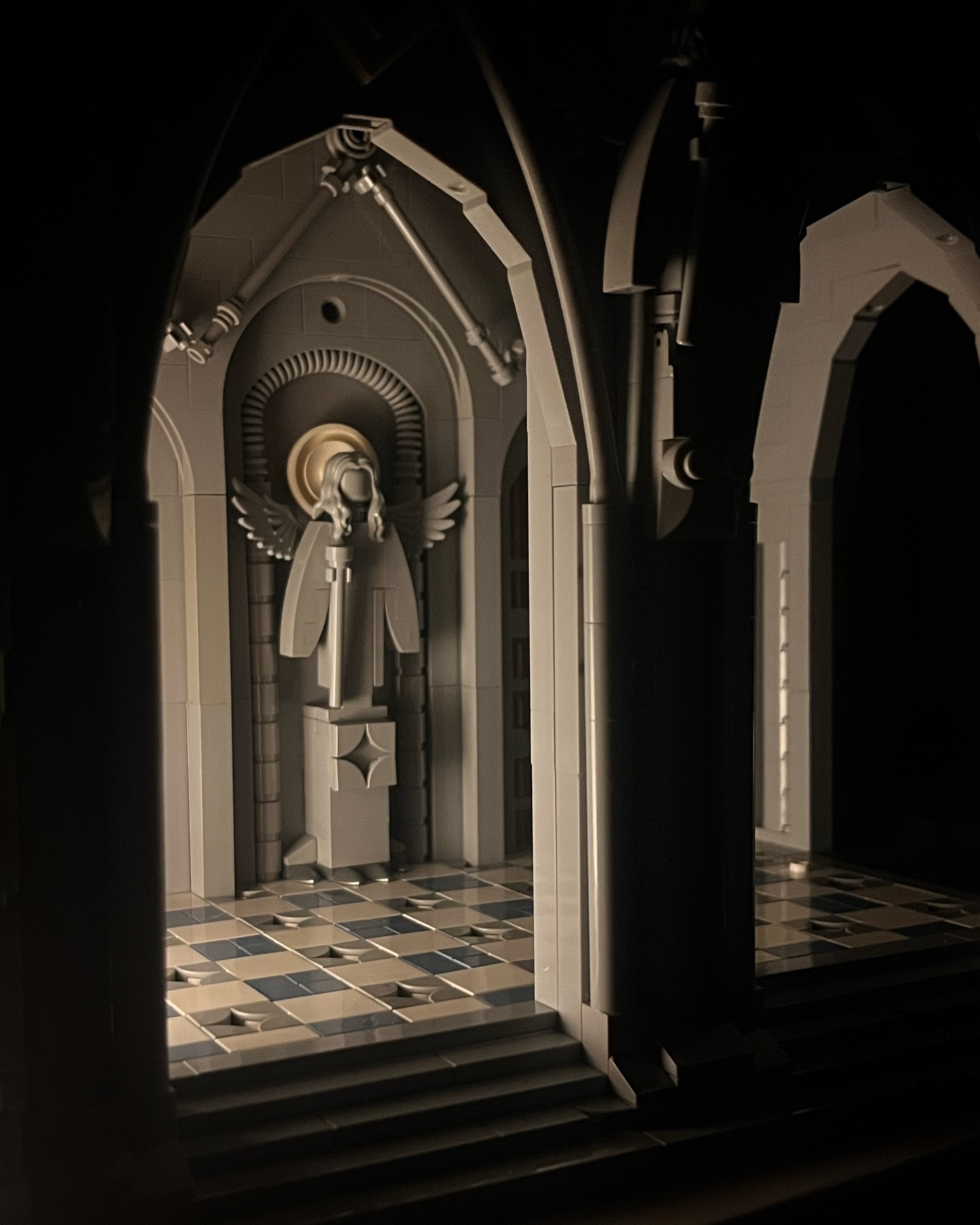
It wasn’t until March of this year (2025) that I decided to share any of my builds online under the title @cathedralofbricks, named for my focus on gothic and medieval architecture. Since beginning to share my creations I’ve truly been blown away at the positive responses I’ve received. I’ve felt very welcomed as someone new to the greater LEGO community.

TBB: Do you have a favorite castle set from LEGO’s history? A favorite Castle faction?
Luke: I’ve never really had a favorite castle set though one of my very first was the Guarded Inn( 6067 ), which I still have. I certainly appreciate the theme being a staple of LEGO from early on and it has certainly played a role in making me want to keep building castles. But in my return to LEGO My real interest has been in coming up with my own builds rather than collecting sets. As for factions, I suppose my long time favorite would be the Lion Knights as they were some of the first minifigs I had as a kid and I’ve now got quite a few in my collection (especially after sorting through so many bins of parts from that era).
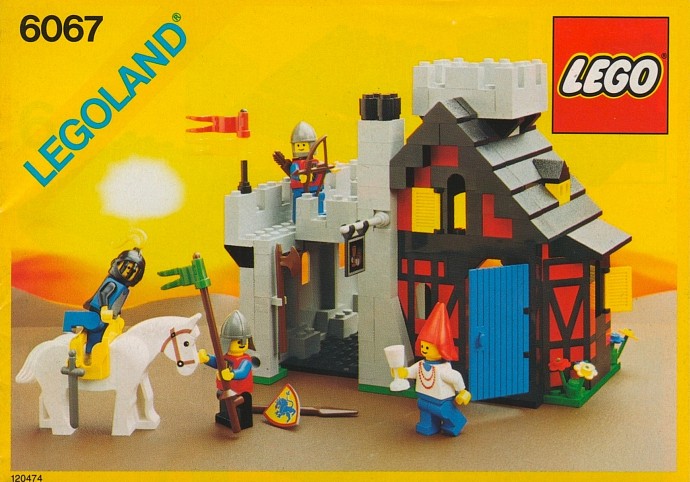
TBB: Castle has always been a cornerstone of MOC building and the genre keeps evolving with new techniques and trends in the community. As you enter the scene, how do you take inspiration from what came before while finding your own voice?
Luke: When I started building again, it really had nothing to do with what had been done by others or even what LEGO was producing. I was aware of the castle sets I’d seen in stores and had assembled a few Hogwarts ones but didn’t know there was a MOC scene and I wasn’t familiar with the trends or techniques out there. I just wanted to see what I could do with the parts. For the first couple of years it was an endeavor of self-taught trial and error trying out new things at the table. However, since I’ve started sharing my work on Instagram and receiving messages from other LEGO fans, I’ve discovered a host of other amazing builders and techniques.
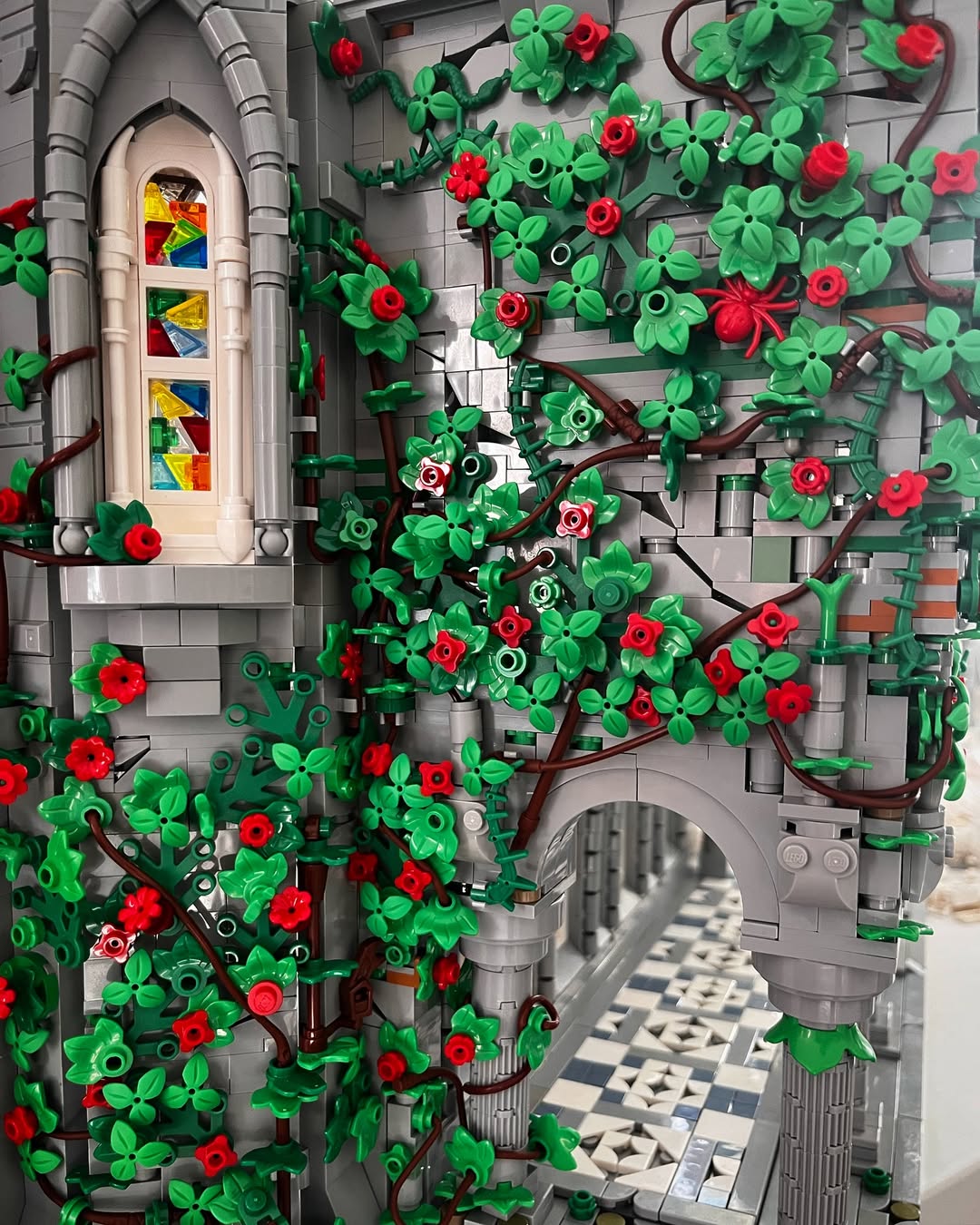
I still have lots to learn about building and the more I do the more I want to push myself to incorporate techniques and try out new things. Up until recently I had never thought much about using LEGO as a voice beyond my own personal enjoyment but have found that sharing my work has rapidly found an audience and resonated with other LEGO fans. I’ve never wanted to take LEGO too seriously or to compare my work with other creatives as I find that mindset counter-productive to personal expression and enjoyment. But alongside the other great builders out there my work does appear to have found its own style and voice. Honestly, I’m just happy to be part of the AFOL community.
TBB: From the start, the builds you’ve shared have been quite large in scope. Do you ever face doubts when you’re building larger scale MOCs? If you ever do feel uncertain, what helps you push through and finish a MOC?
Luke: I think my first real idea was to just start building castles and see what kind of scope I could achieve. Like using up all my bricks in a singular project. Then I’d get a few more parts and add to what I’d already created. So building large was always something I was interested in. However, as I built and tried adding new levels of detail I’d want to go back and take apart stuff I didn’t think was as well built. So there’s been a lot of elements I’ve developed to a stage and then abandoned after thinking about how it could be done better. This has occasionally made me doubt that I’d bring my builds to a finish point, especially when there hasn’t been an external motive to finish other than my own joy of building.
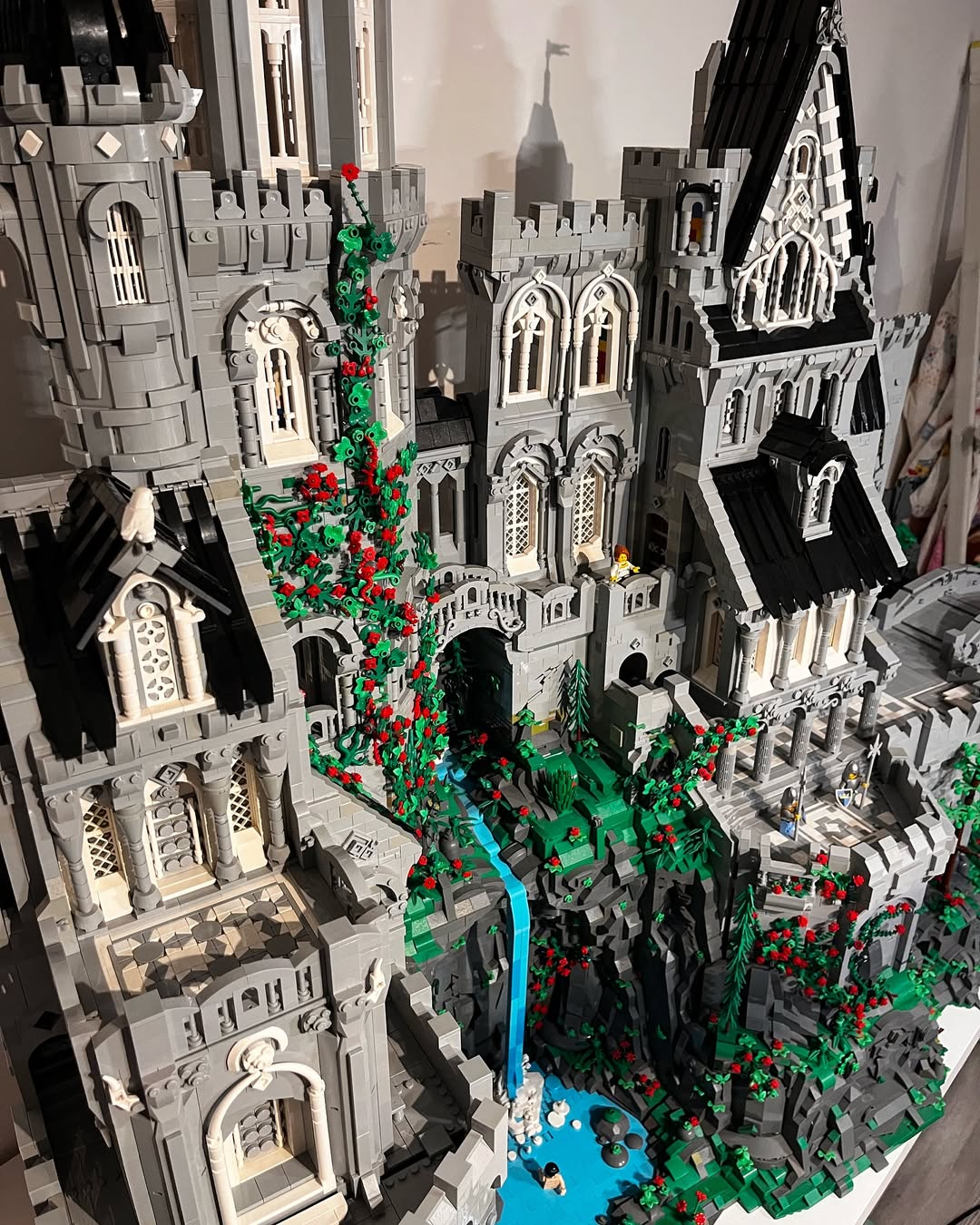
I’ve never exhibited, so have had no deadlines or need to build for transport, and up until recently was not posting my work so the idea of being finished was really only to do with personal motivation. Once I started sharing my creations I think it gave me an added push to showcase more completed projects. However I still find that highlighting aspects of what I’m working on is well received and a part of the process.
TBB: On a practical level, how do you handle such a large collection of parts?
Luke: I’ve spent a lot of time over the last year transforming what was a crammed corner of my living room into a functional building space. Shoutout to IKEA for the table and floor to ceiling cabinets that now help hide a large portion of my stacks of Lego drawers and keep my house feeling less cluttered ! ????
TBB: Sometimes you share elements of a castle, like just a window, mosaic, or gate, sometimes it’s a more complete structure. Do you start with a finished castle creation in mind, or do bigger models spring from details? Could you share a bit about your process?
Luke: When I started out I was primarily focused on a finished castle, which I found was actually more challenging when wanting to achieve a well detailed finished project. When working from a baseplate upwards without knowing exactly how I’d complete a section I’d just build without focus and the details seemed to lack. As I’ve wanted to push myself to complete more detailed builds, all my recent projects have sprung from developing detailed sections like a gateway or window first and using them as the jump off for a larger MOC.
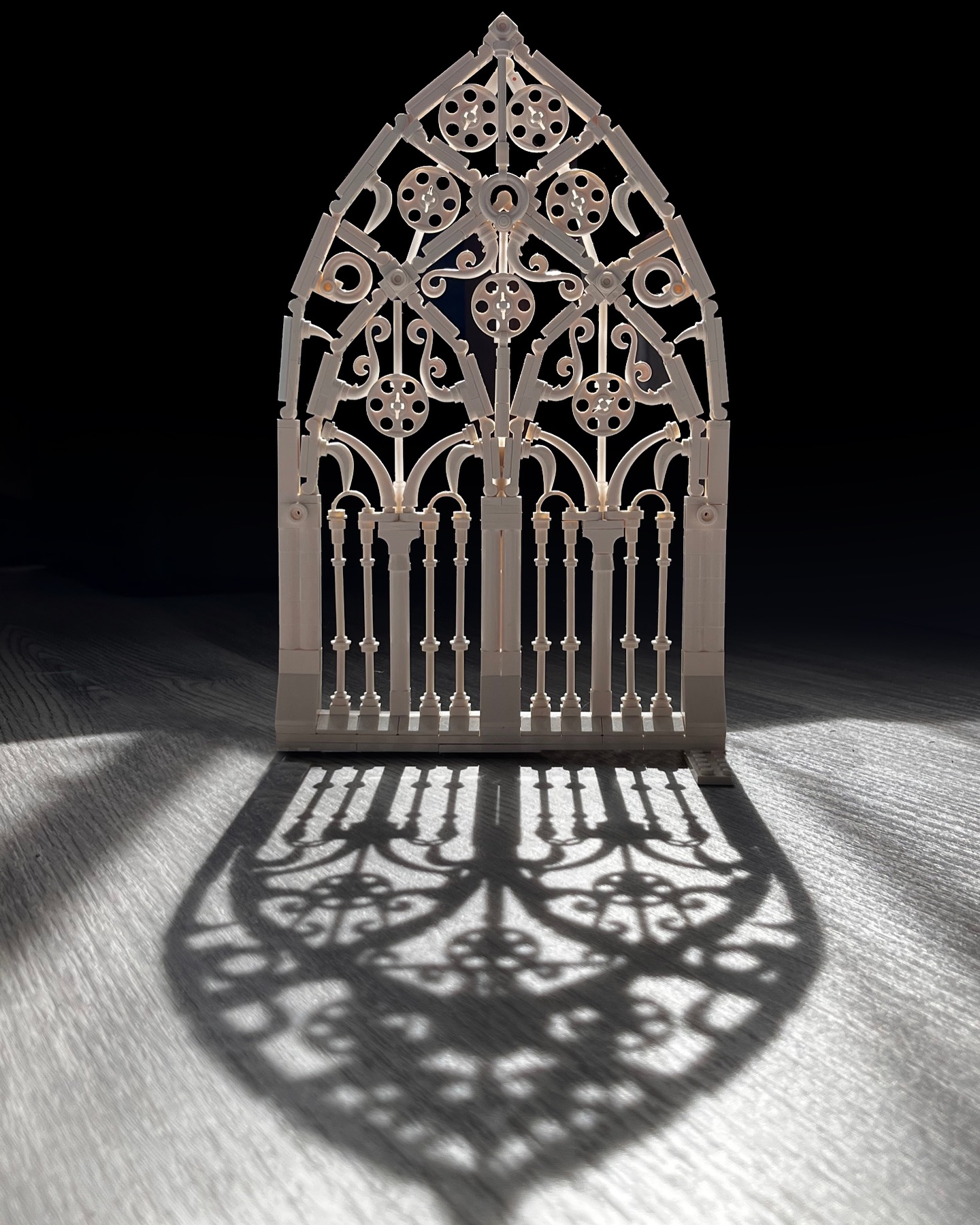
Now I usually start by working on a particular technique or idea I have for one of these aspects and then once I’m happy with it I create around it, planning for a window or door to be a focal point in a finished design and expanding from there. Sometimes it’ll end up being the last part I add in to the build, but it was created first. I’ve found this process really helpful to making MOCs I’m personally proud of.
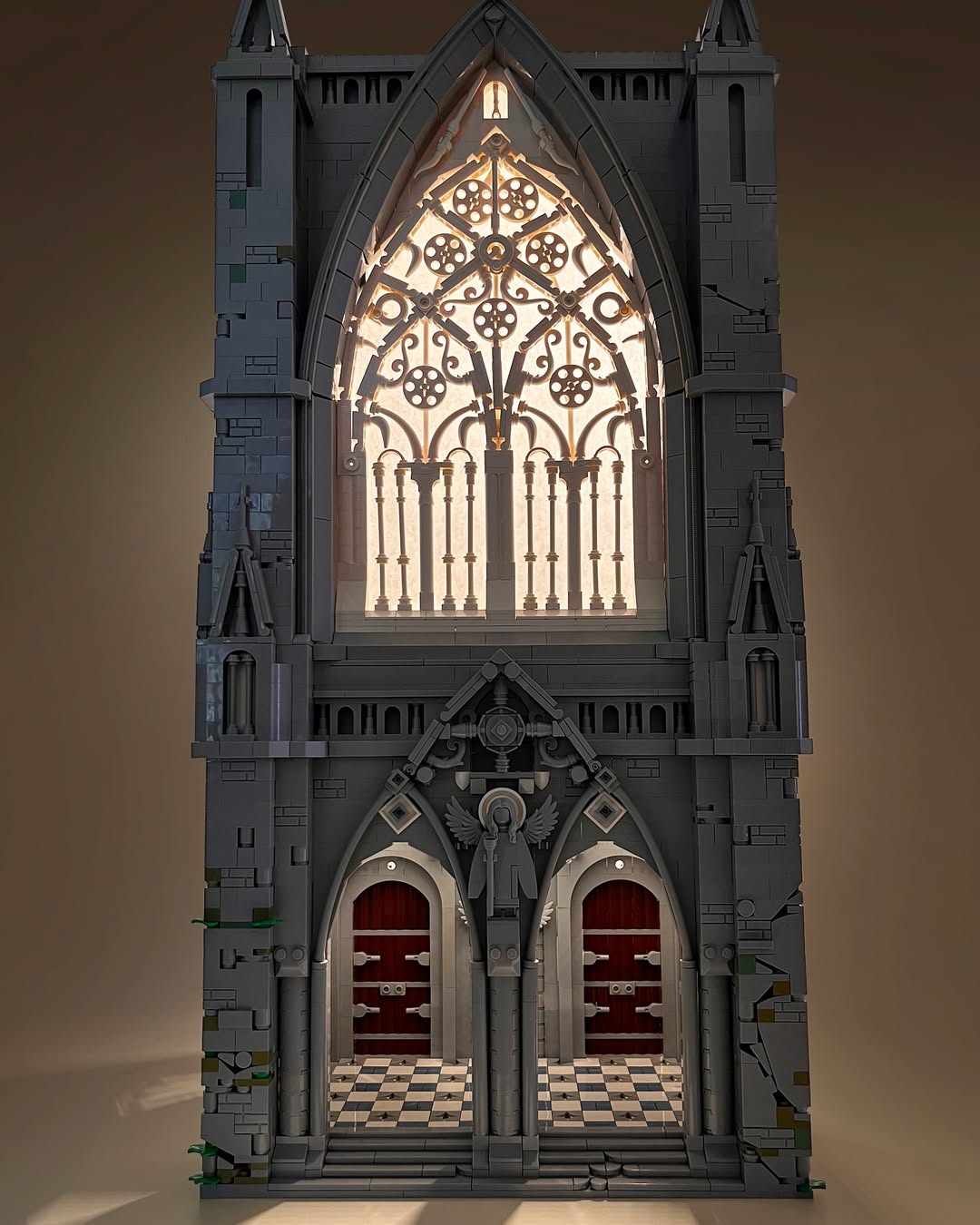
TBB: Your window designs in particular are incredible. I especially love the use of robot arms in the filigree windows. What is your inspiration when designing windows? How much are you referencing real world castles and cathedrals versus just focusing on what looks great in bricks?
Luke: Thanks! Of all the aspects of LEGO castle building, I’ve personally enjoyed developing gothic windows the most. As I think most lovers of medieval, gothic and fantasy architecture would agree, the beauty of this genre is largely due to its pointed arches, ornate tracery patterns and stained glass.
These elements have been a major focus of my Lego journey and plenty of evenings have been spent just trying out different ways to imitate this beautiful antique approach of designing a window. Obviously when translated into Lego parts there are limitations, so striving to come up with ways to achieve this style and retain the feel I’m looking for is mainly focused on what looks great in bricks rather than closely referencing historic specifics. Finding new ways to use a part is also really fun for me, so in the case of using arms I was looking for a way to add ornate detail to the negative spaces in my windows and the pointed grip shapes seemed like a great solution. I think it’s the challenge of capturing the essence of a real world architectural feature in Lego that I enjoy most about it.
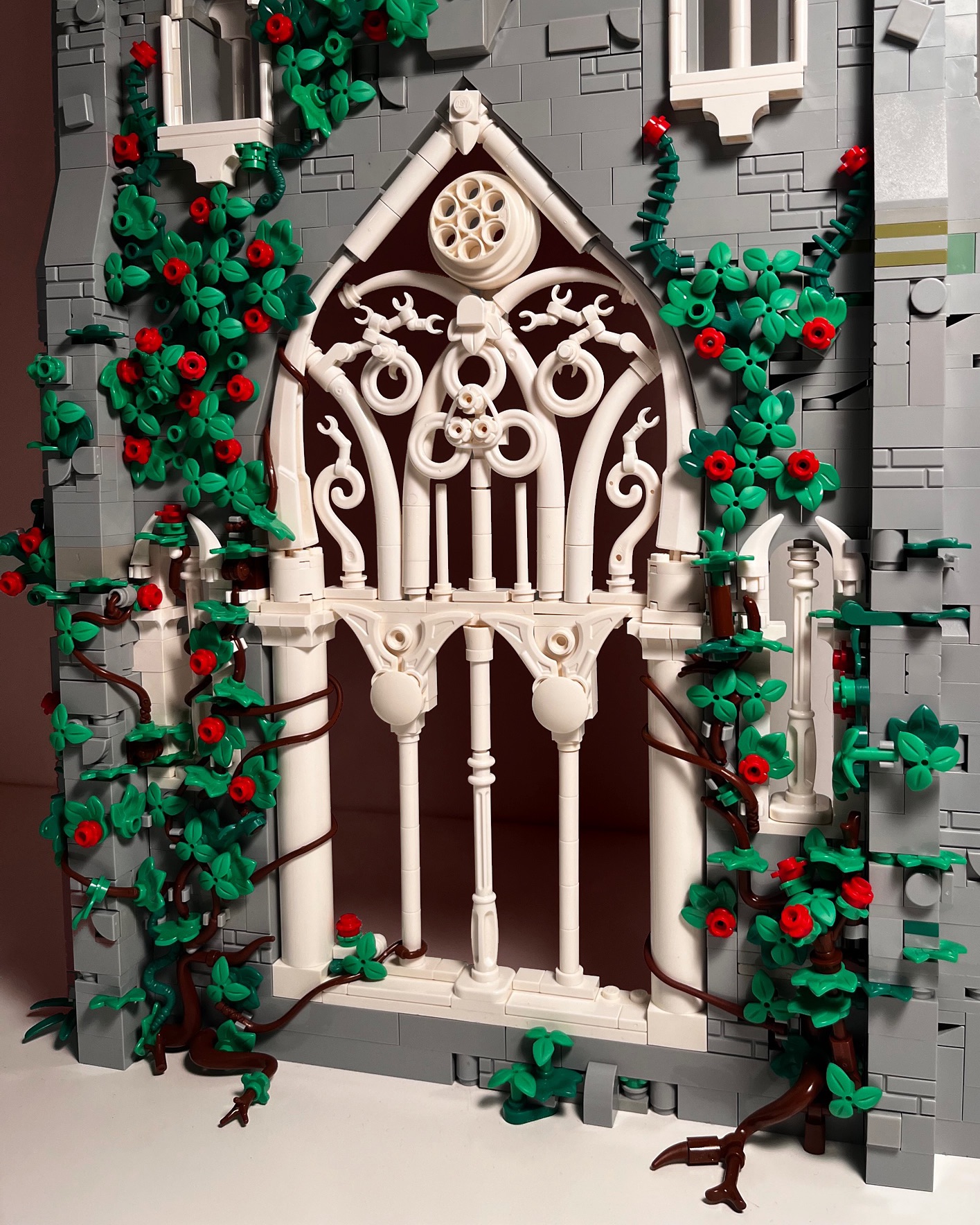
TBB: Architecture aside, your works feature beautiful foliage that provides pops of color and a contrast to the angular bricks. Do you have any tips about integrating plantlife into castle creations?
Luke: I think one of the reason castles are so intriguing and romanticized is that they are a thing of the past, and whether still in tact or a pile of ruins, they are a shadow and testament to another time from antiquity. So when taking this consideration into a build, the passage of time is something I want to include in the overall feel of a castle. And nothing adds age like an overgrowth of foliage. Grassy ledges, A wall covered in vines. Tree roots pushing through stone.
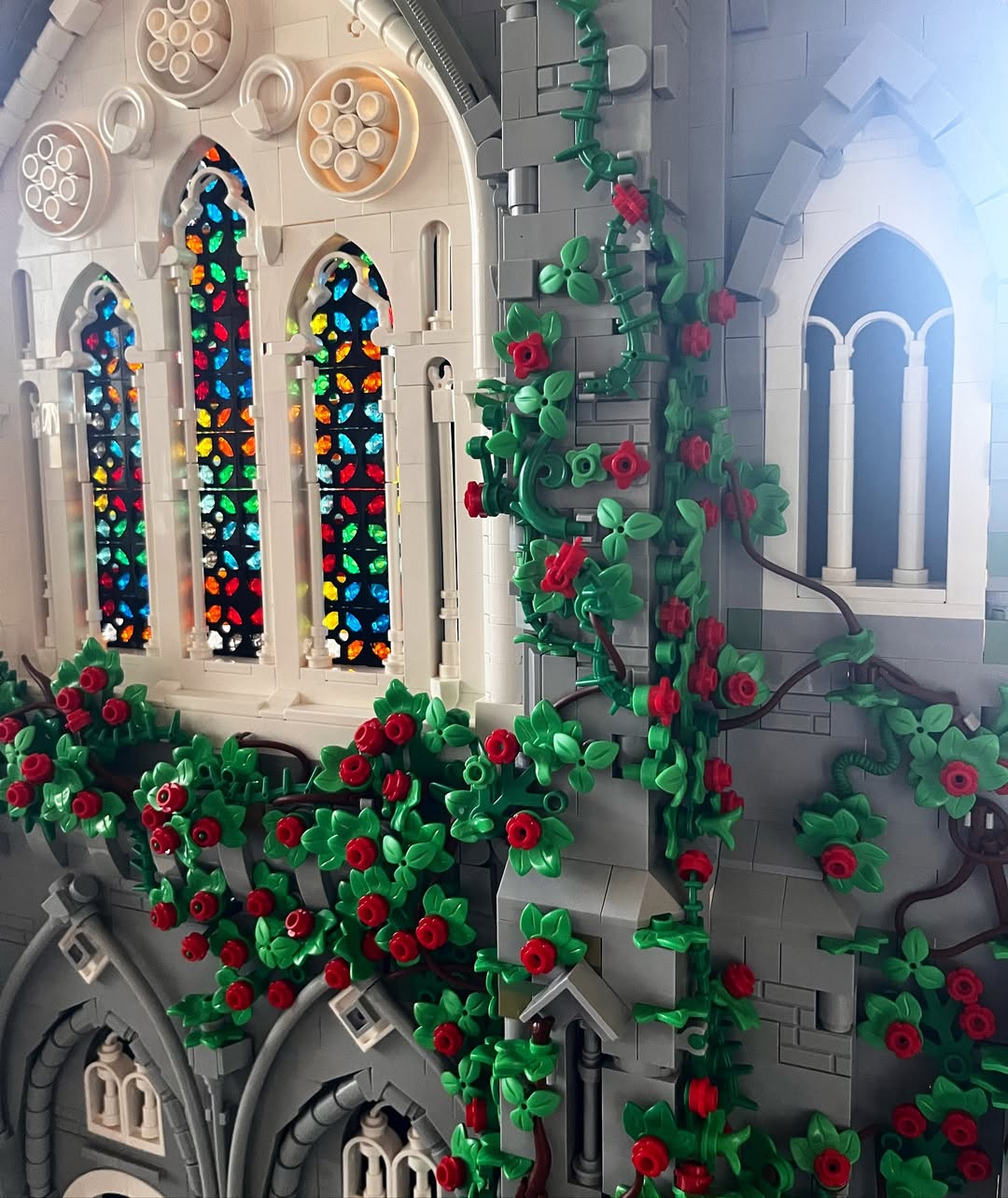
And along with providing contrast, texture and detail, I’ve found plant elements offer a way to break from the standard grid of Lego and add a more organic feel to what might otherwise feel like a rigid build. So when planning a structure I intend to add foliage too I always make sure to add a lot of connection points with SNOT and clip bricks as I go. And just like with the architecture, I try to imitate the way they look in real life rather than just stick plant parts all over. I want to mimic how plants actually grow, reach and bend in real life to achieve the most authentic feel.
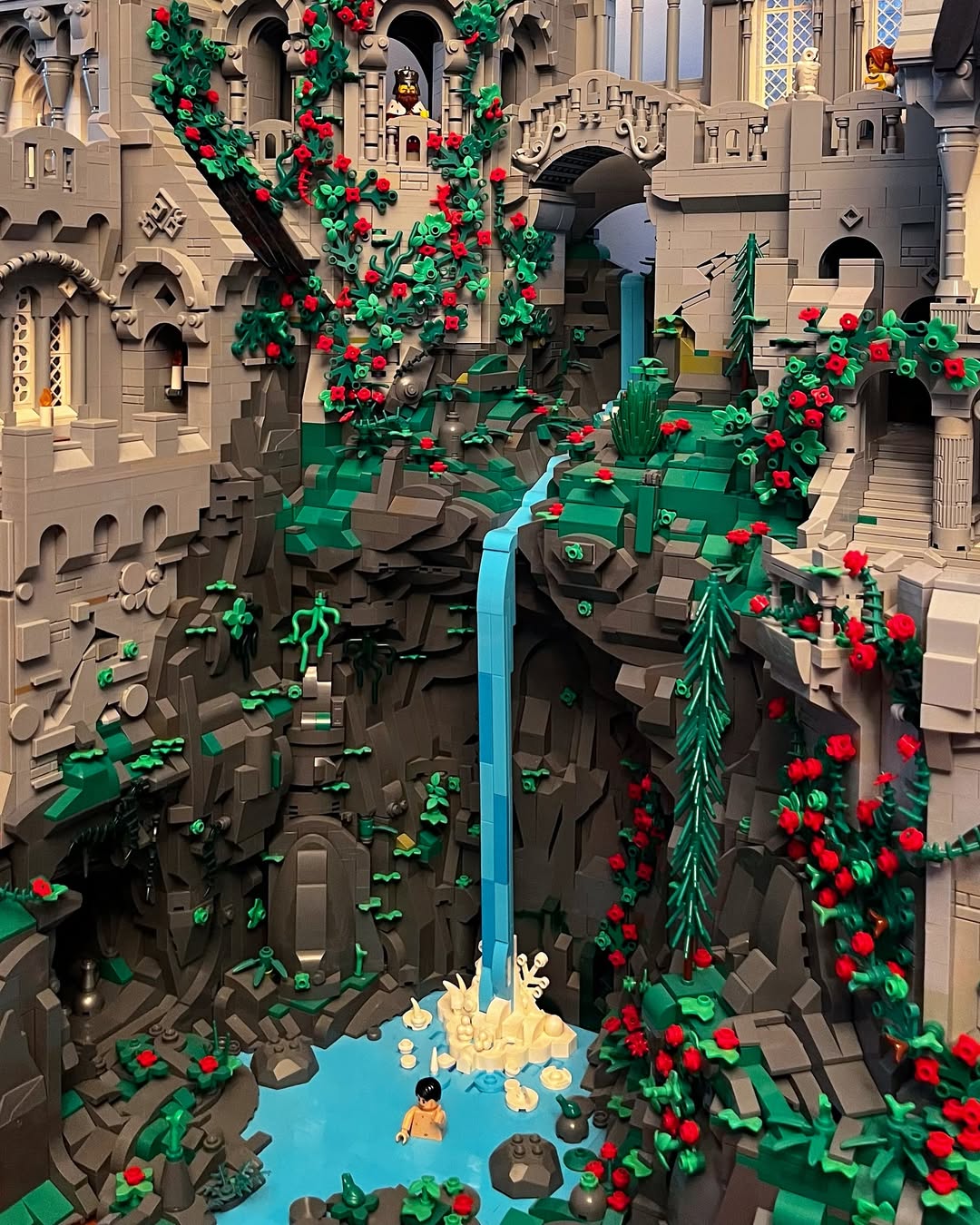
TBB: Some of your builds include or hint at deep lore about a fantasy setting. How much is story and worldbuilding a part of your LEGO creativity? Does knowing about the people who live in a place help you with its construction?
Luke: I’ve always loved historical, mythological and fantasy stories. So when coming up with ideas to build, there’s a vast amount of influence from the worlds found In them that I draw from. I also love visual story telling so yeah, lately I’ve really begun thinking of the way a Lego MOC might depict a narrative or evoke a feeling rather than just building a structure or space. I also think that having a story involved really sets the stage and allows other people to use their own imagination to enter into my builds. I don’t always have a narrative in mind at the start, but before a MOC is done I’m certainly generating a story to go along with the scene.
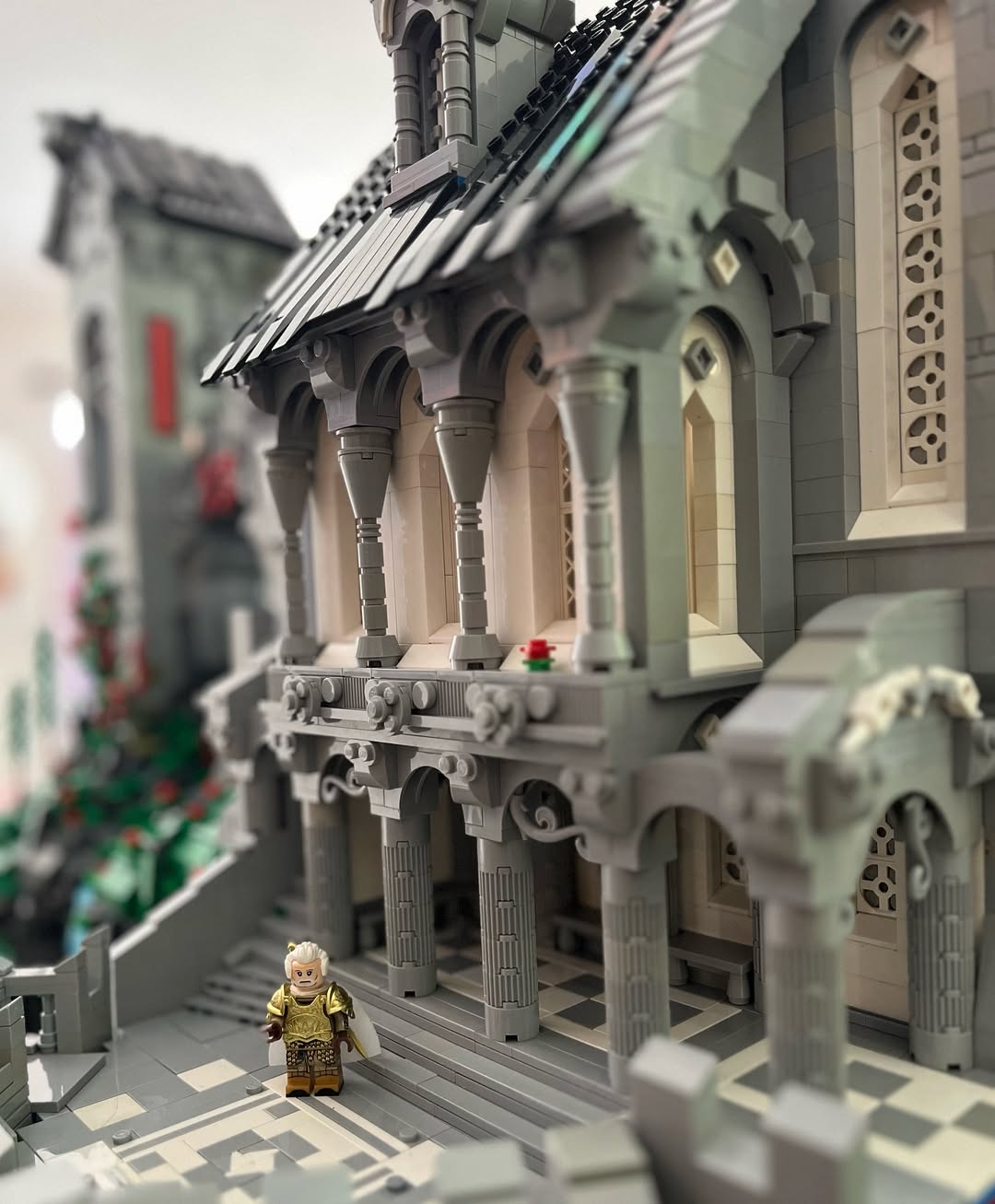
TBB: The Summer Joust is currently open and you’ve been participating in several categories (best of luck!). Has participating in a competition helped with your productivity? Any advice for builders who might be curious about participating in a community event but haven’t made the leap to join?
Luke: Participating in this years Summer Joust has definitely helped my productivity. It’s been exciting to throw my hat in the ring as a competitor and it’s the first time I’ve entered my work in a contest. Their category prompts seemed like a great way to challenge myself beyond my own freestyle nature, and working within the contests rules and deadlines has also made my building time more deliberate and focused.
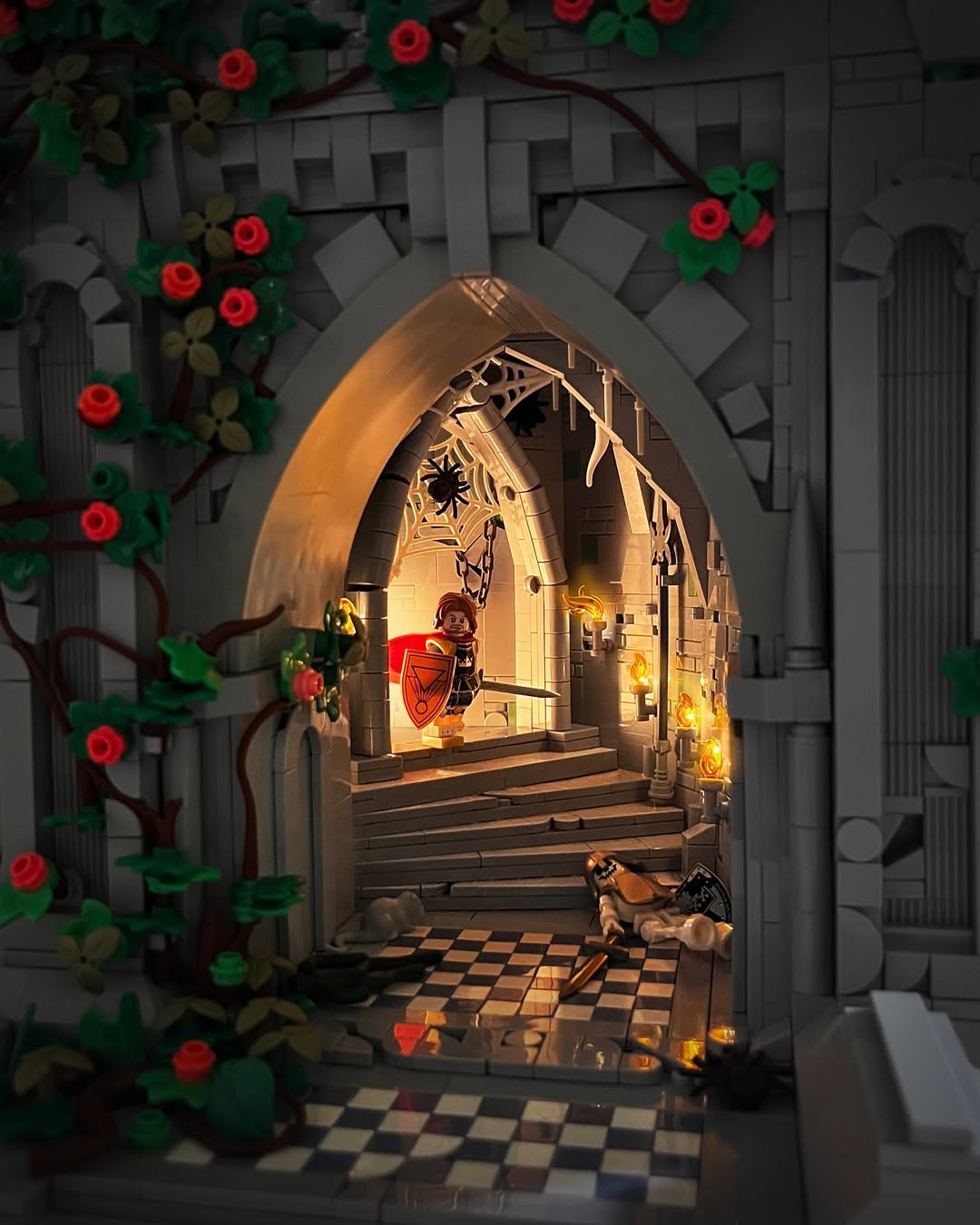
I had come across several of the submissions from last years Joust and was really blown away by the great builds I saw. So after getting past my initial hesitance to participate with such great builders I decided I had nothing to lose and began building. So far I’ve entered three categories and really loved working on each. A real highlight being the overwhelming responses I’ve received since posting my entries. To anyone who’s interested in participating in a community event I’d say go for it! And to remember that the real win is in having fun building!
TBB: Speaking of Summer Joust, your Isle of Solace MOC is absolutely stunning, bringing to bear all of the skills you’ve demonstrated up until now. Could you walk us through a bit of the process for this incredible creation?
Luke: For that particular build I really wanted to go beyond a smaller MOC and develop a proper island scene surrounded by water to suit the “Island Bound” prompt, while also wanting to include a landscape and a structure. I didn’t have a particular story or lore in mind at the start but rather a feeling of isolated tranquility I wanted to present and a technique I wanted to try.
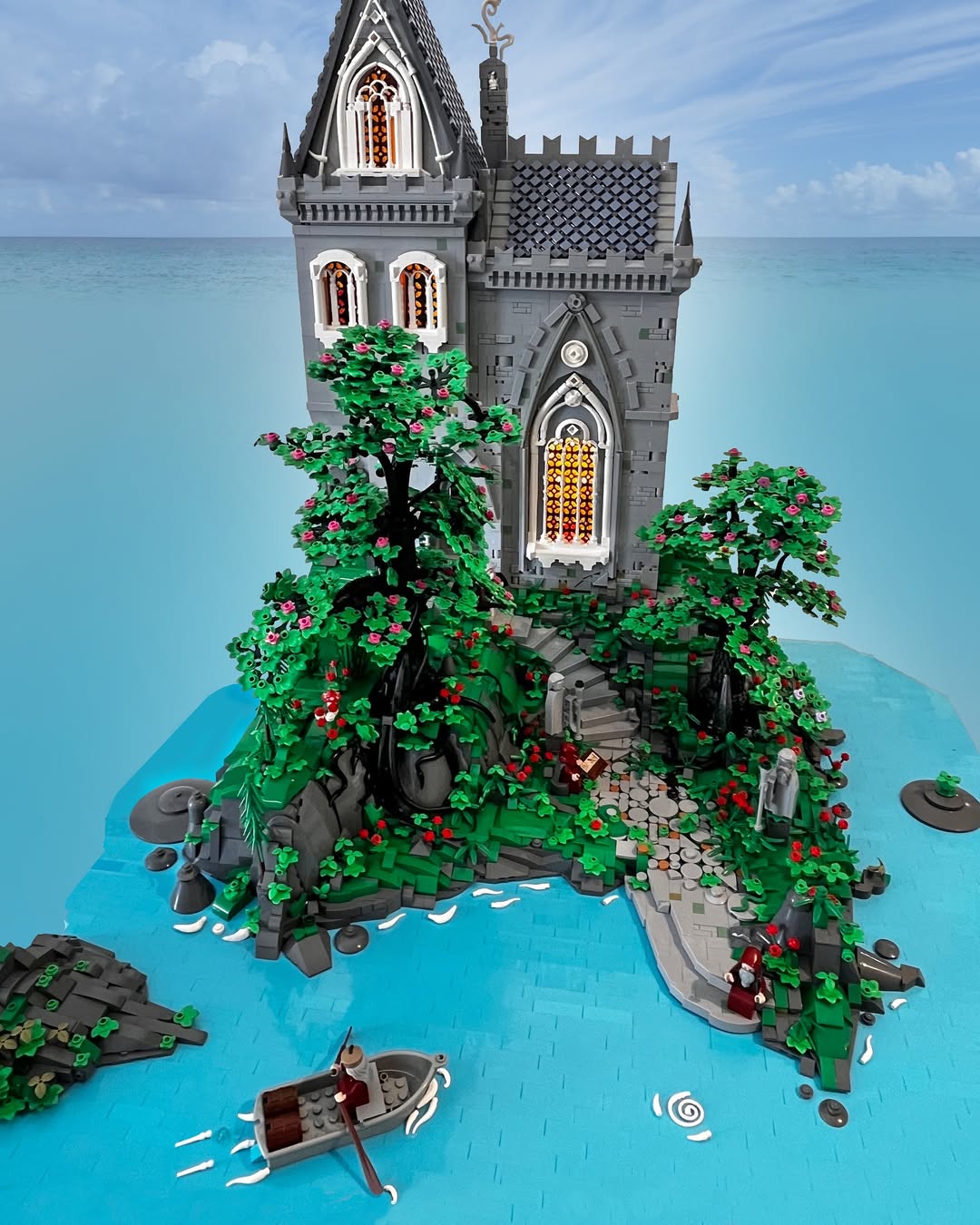
I began as I often do by developing one detailed feature I want to focus on and expand from there. In this case it was a tree I started with. I’ve really wanted to try making tree trunks out of black tire parts for a while ( as I have a lot of them from random vehicle sets I’ve collected in Lego bins ) so thought this would be a great time to try it out.
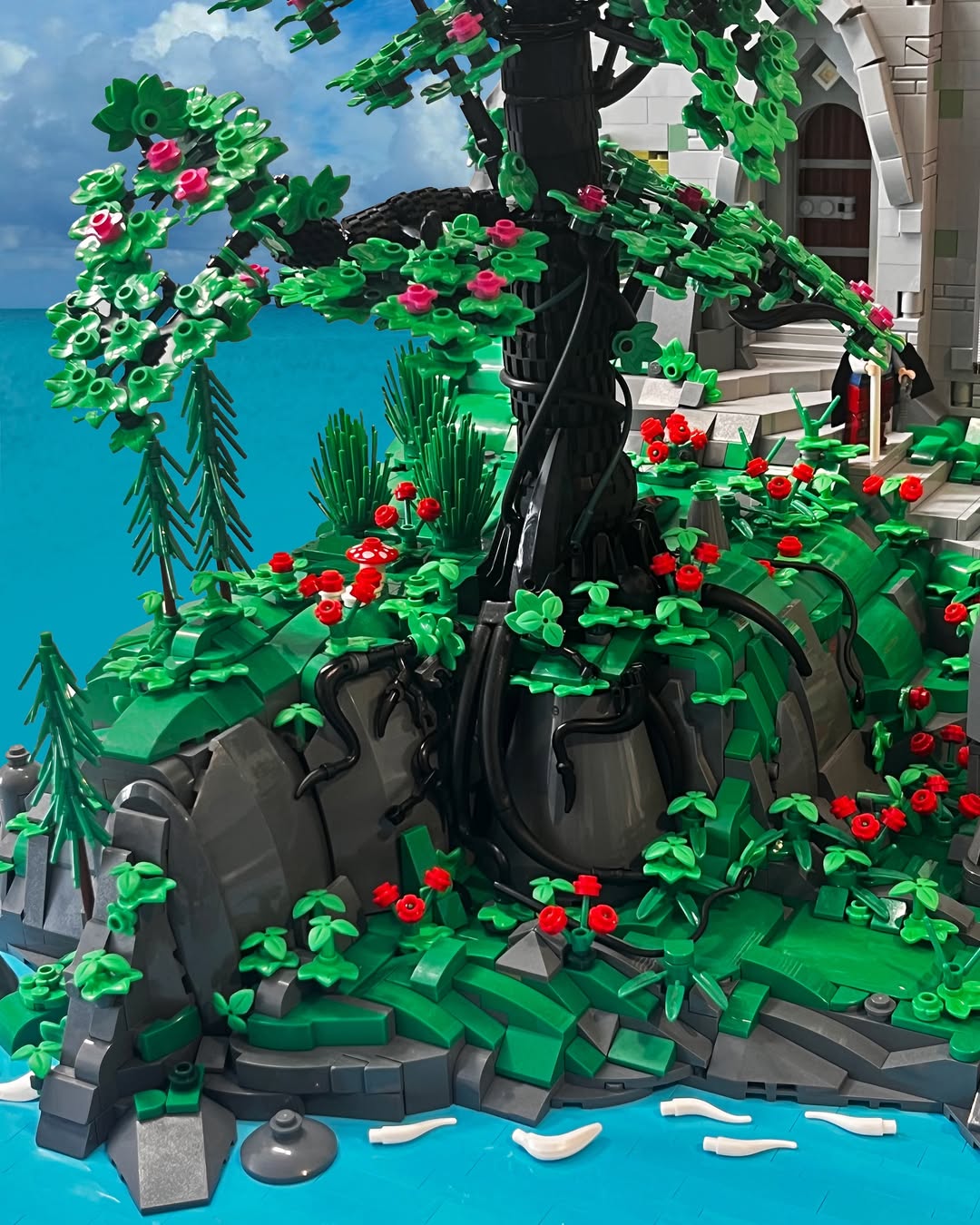
Once I had my first tree completed I started thinking about the island landscape I wanted to place it in and how it might feel in the scene. So the island itself really came into shape around how I wanted tree roots to wrap over a rocky rise in the island. And that gave way to thinking of adding stairs up the rocks… and a path ..a dock…and another tree, and then a destination for the stairs… culminating in a space for a castle nestled between them, which I then used to develop a story. Once I had a narrative in mind I used that to base the kind of minifigs I wanted to use for the finished scene.
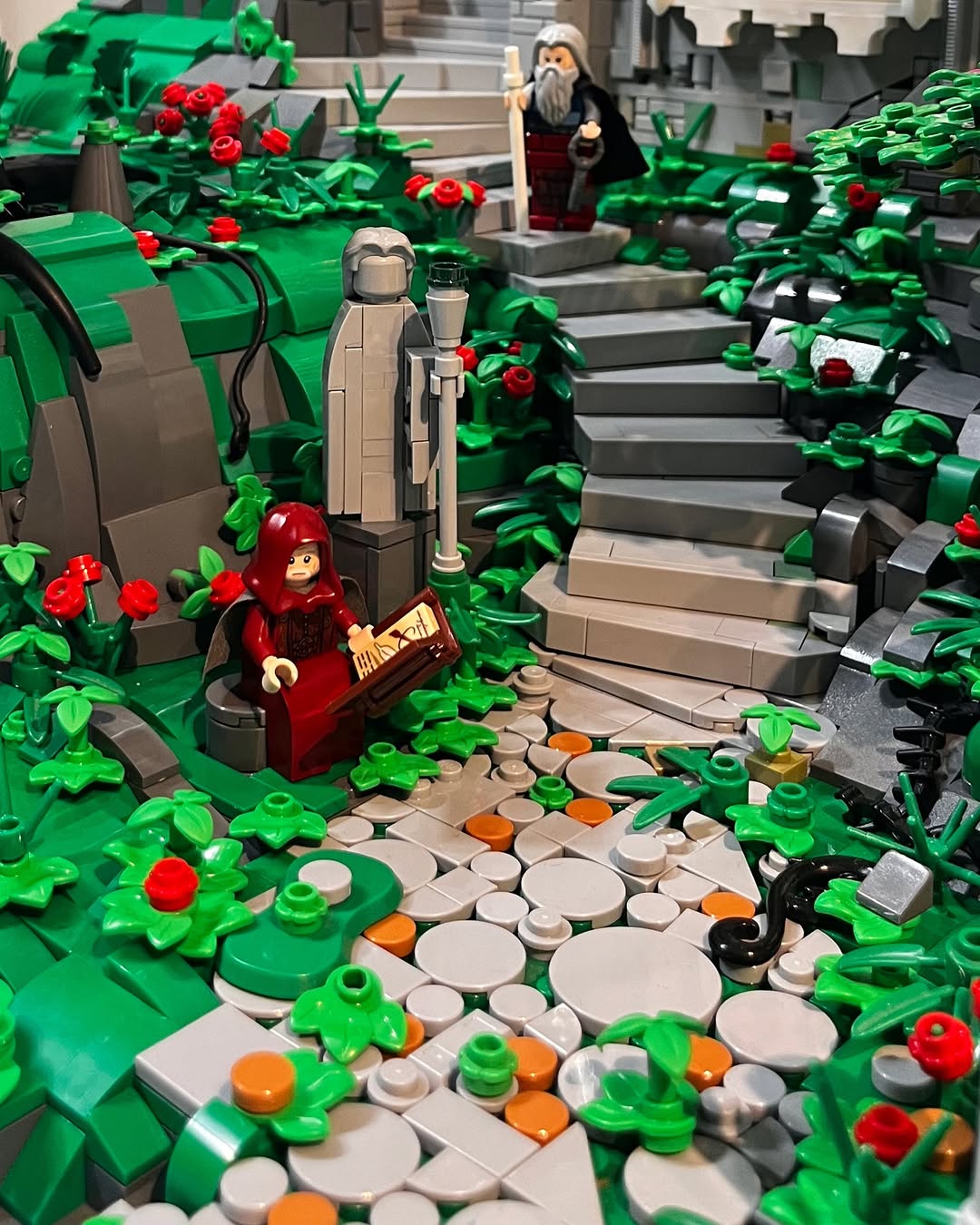
The underlying water base and flourishes were the final elements I made. So it really was an explorative journey from start to finish. All told I took around three weeks of evenings at the Lego table developing it. I have sketched out other projects beforehand but this one really was fleshed out along the way. The parts were mostly what I had on hand, but a trip to my nearest pick a brick wall for more medium Azure water bricks and foliage parts came in necessary to complete the scene. As for renders, I’ve never actually done any digital Lego building and work entirely with physical bricks. I can see the benefit of planning out part needs before hand but I just love developing ideas with real physical pieces.
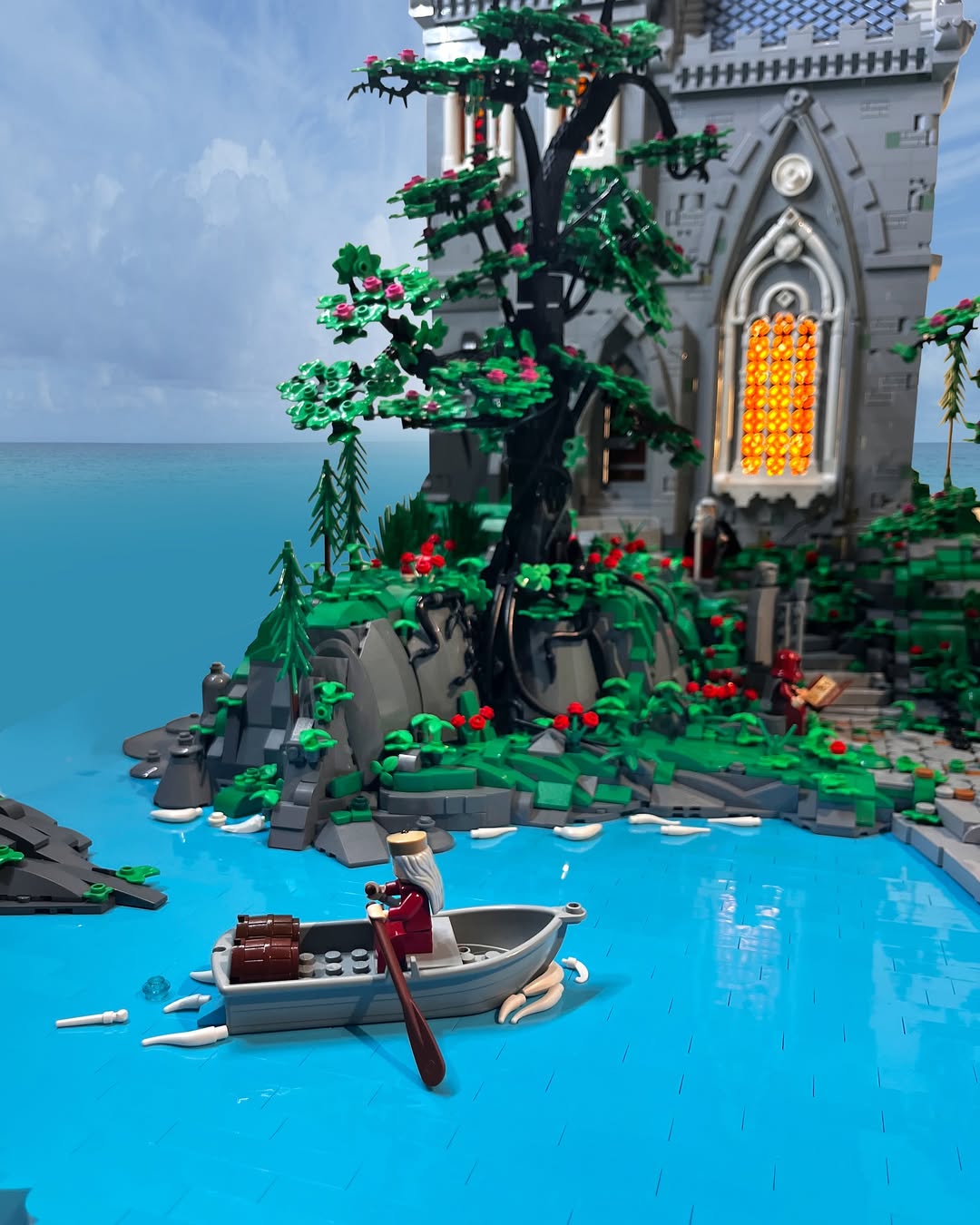
TBB: Beyond the bricks, what really elevates your work is the lighting and photography. Large-scale castles can be quite tricky to photograph well, but your photos are always sharp – bright to show of the details, atmospheric when the scene calls for something moodier. Have you done a lot of photography prior to capturing your LEGO creations? Any advice for builders who are looking to up their photography game?
Luke: That’s a great compliment. Thanks! As someone who also works as a visual artist, graphic designer and photographer I’ve had a lot of experience learning principles of design, presentation, lighting, composition, and photo editing. So once I decided to start sharing my LEGO hobby online it seemed natural to apply those things when capturing my builds for posting. I agree that it’s a major part of completing a project well. However, I don’t think that owning expensive camera and lighting gear is at all necessary to document one’s builds well.
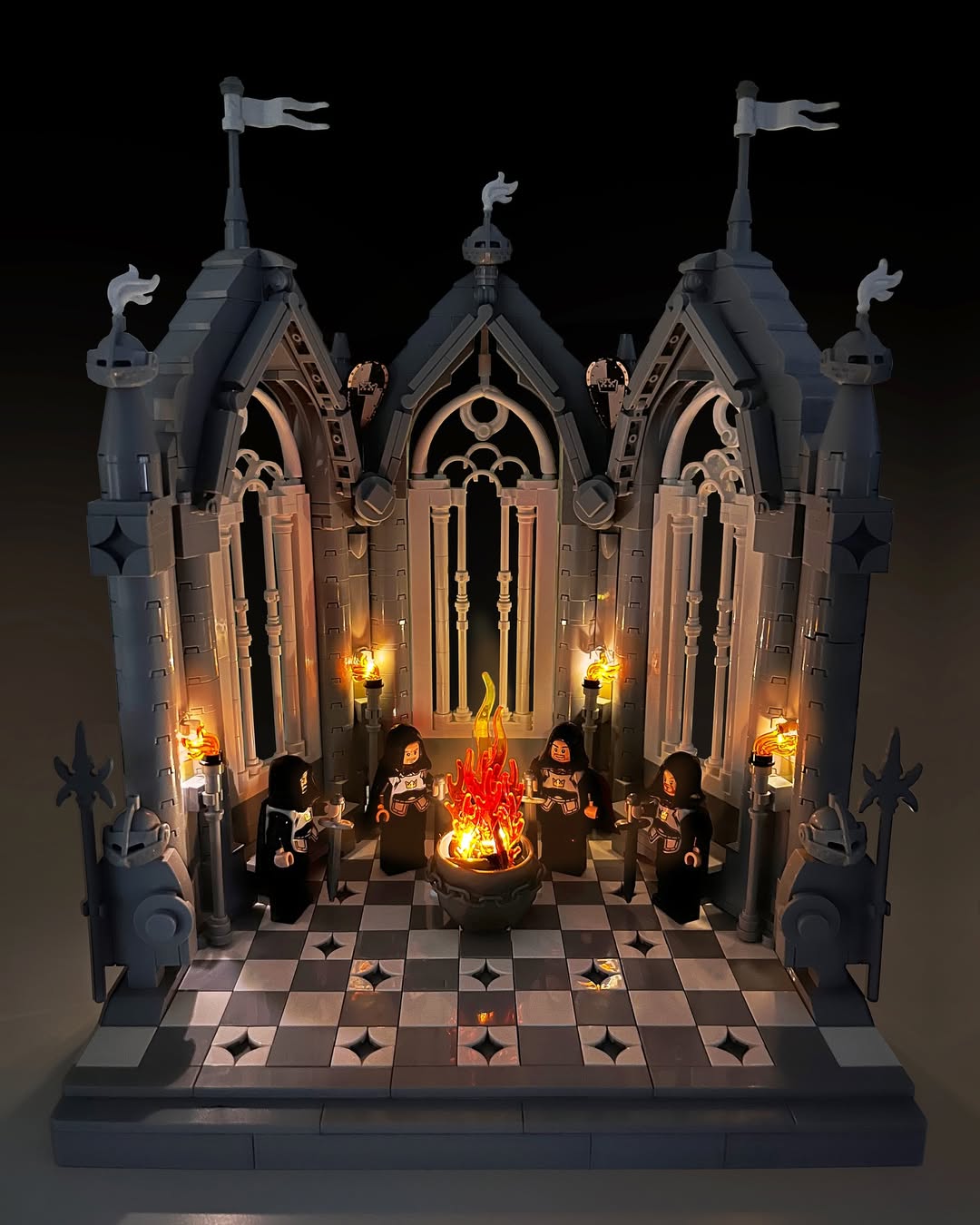
For my LEGO work, apart from occasionally editing out backgrounds in Photoshop, all my posted work has been shot with an iphone, with either natural window light or a muted table lamp and flashlights. So I think for anyone wanting to up their photo game, before spending money on gear it’s really just a matter of thinking through what you want to highlight, ensuring a good composition and working with the lighting you have to get the best results.
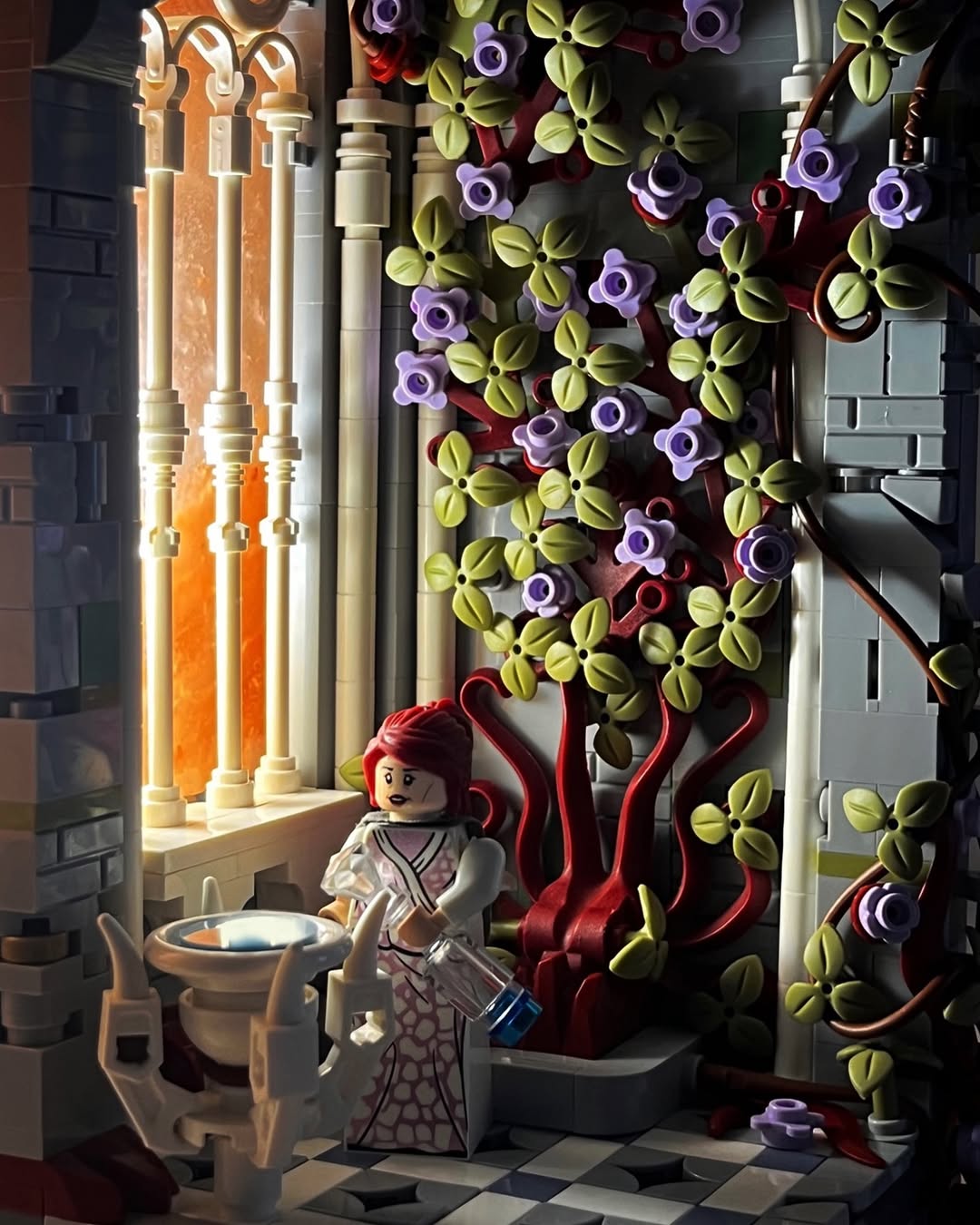
TBB: Thank you so much for your time. As we sign off, is there anything else you’d like to share with our readers?
Luke: Im so glad I rediscovered LEGO in my adulthood and think it’s never too late in life to enjoy playing and using your imagination. Staying young at heart is its own reward! Thank you so much for reaching out and for sharing my work with your audience! I can’t wait to keep building and inspiring others to make their own creations in bricks!
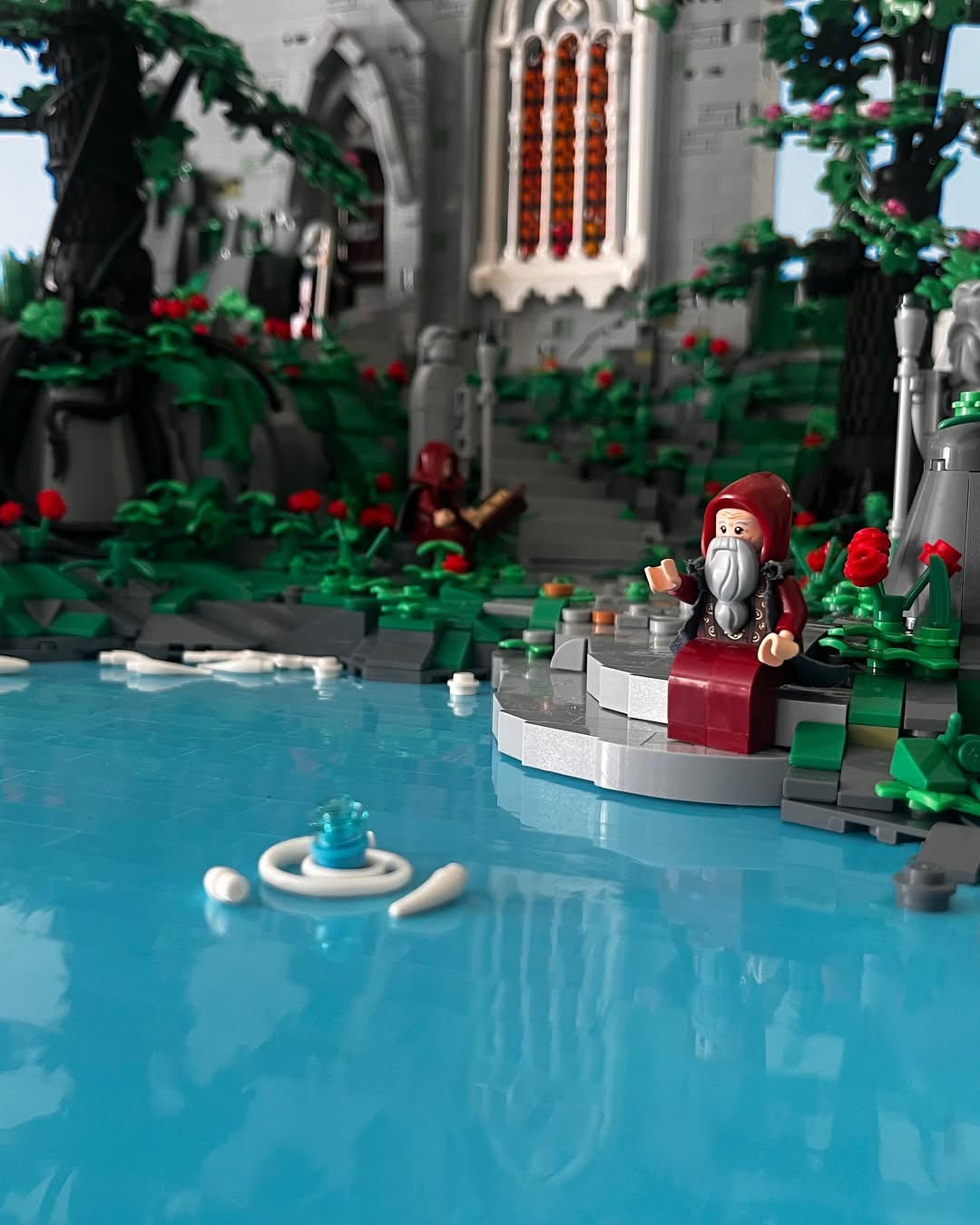
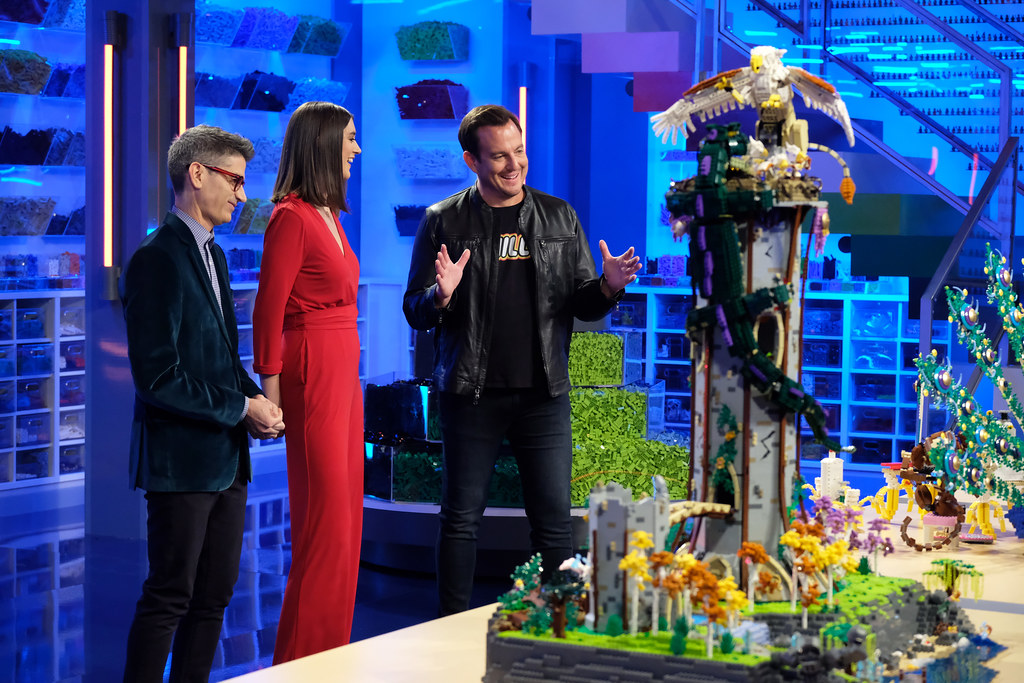
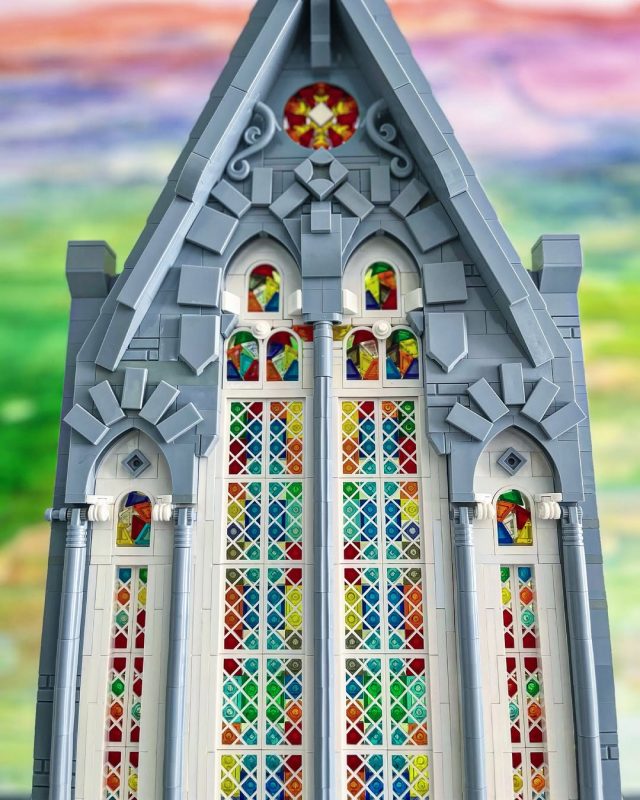
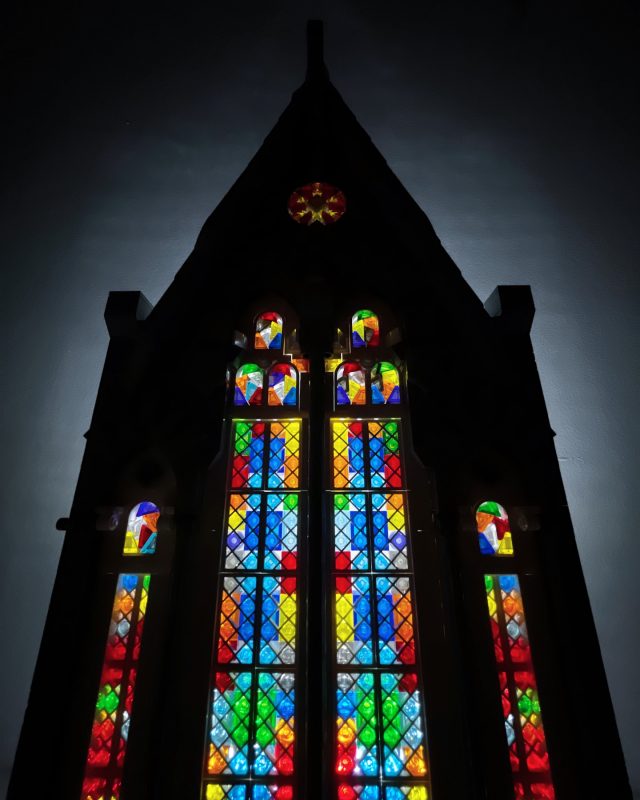
Just wow!!!! I didn’t have the joy of Lego as a child and have just started in the last few years as a senior adult. I wish I could create such wonderful sets. Do you by chance have instructions for this wonderful creation? I do have two Rivendell sets :)
Man, you are AWESOME. I wish you made some directions so I coul$ “try” and copy these
There’s something quietly radical about reclaiming LEGO as an adult medium for storytelling and introspection.